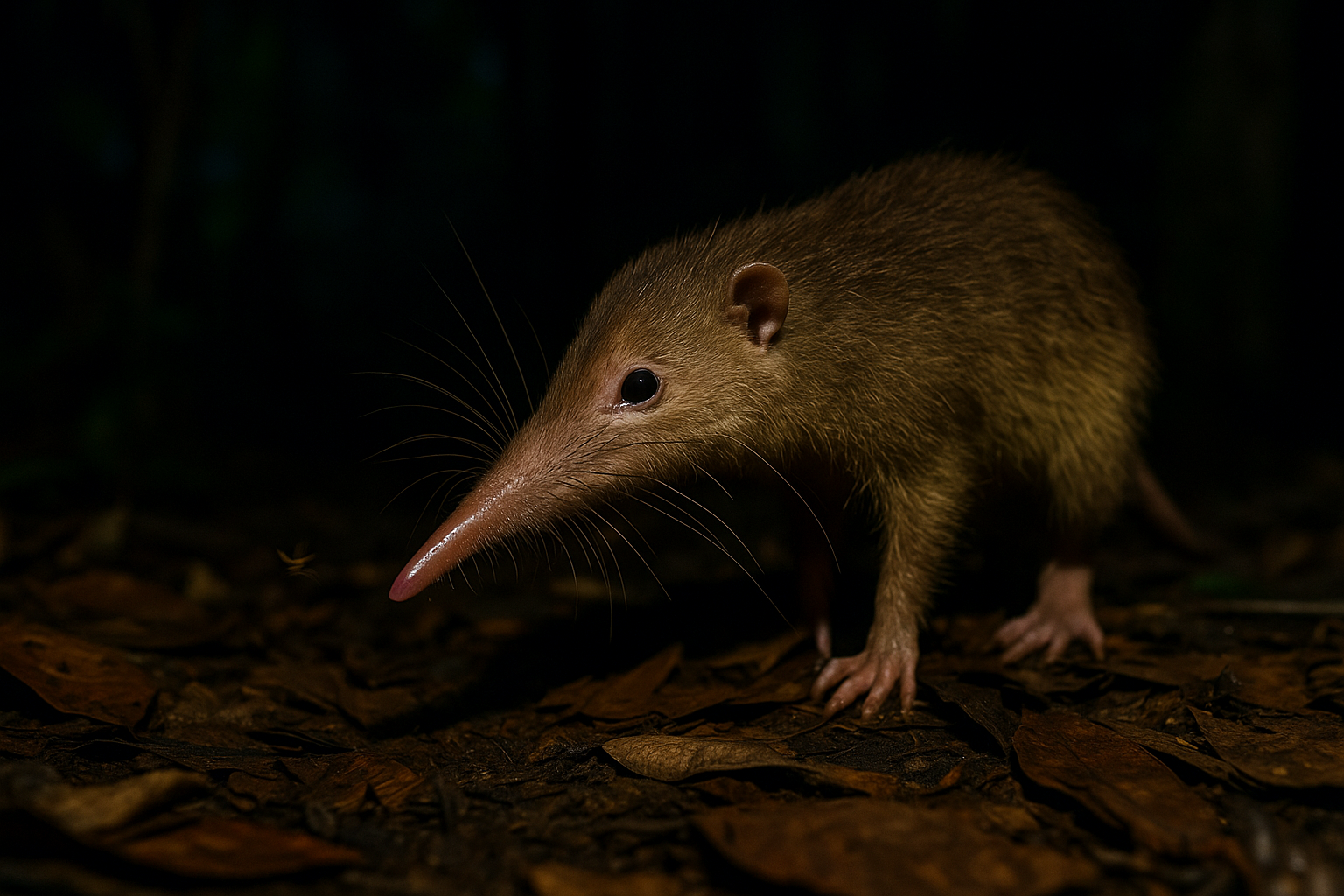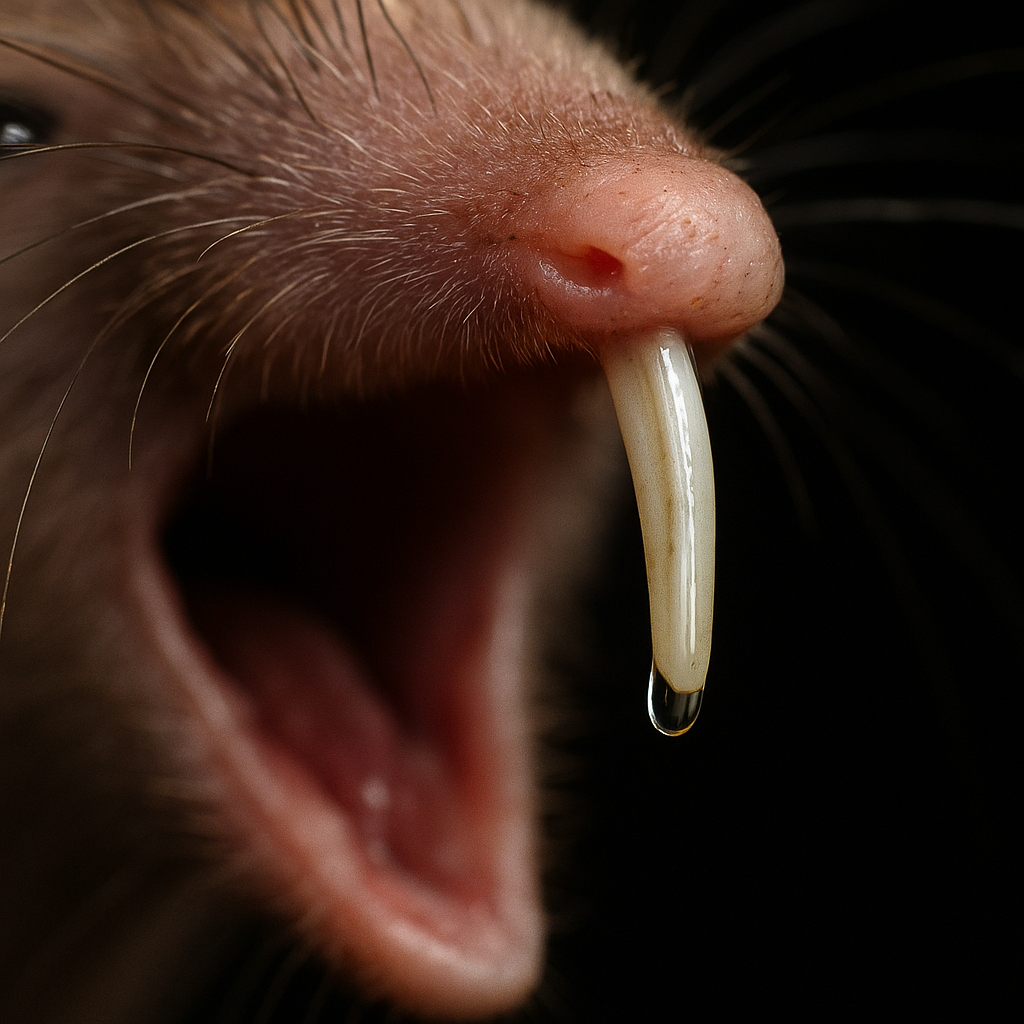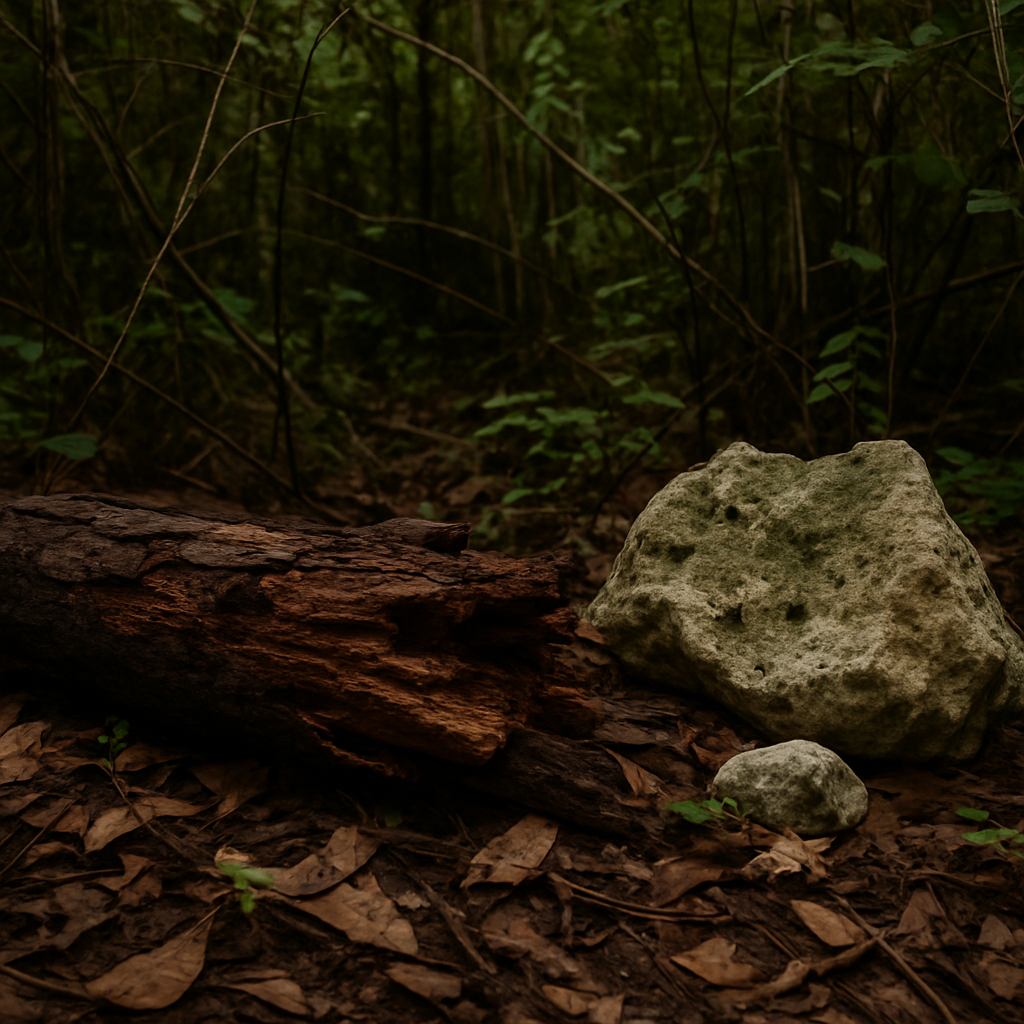Prologue: the night with a needle nose
In the Caribbean, where the night is a warm sleeve and moths stitch weak stars into the air, something moves under the leaves with the gravity of a rumor. You hear it before you see it—a dry shuffle, then a faint click-click like damp pebbles tapped together. A long, flexible snout probes the soil. Claws rake, a beetle thrashes, and then—an almost invisible bite delivered with the precision of a watchmaker. The prey stills. The hunter swallows. This is the solenodon, a mammal so old it reads like a marginal note left by evolution, so specialized it broke a rule that nearly all other mammals obey: it is venomous—one of the few placental mammals to deliver toxic saliva through grooved teeth.

The solenodon is not a celebrity animal. It is a survivor. It has outlived empires and hurricanes, shared its islands with giant owls and dwarf sloths now gone, and learned to work the night like a locksmith—quiet hands, no wasted motion, good at what matters.
1) Identity: what a solenodon is (and is not)
A solenodon looks like a shrew inflated by a careful breath. It is rodent-sized to small-cat sized, with shaggy fur, short limbs, and a tail that seems borrowed from a lizard. The head is the signature: a long, flexible rostrum armed with whiskers and a nose that seems jointed at the base, able to flick and probe with uncanny precision. Eyes are small and dark; hearing and smell are the power senses. The forefeet carry strong claws; the hindfeet are grippy and sure.
Two living species remain:
- Hispaniolan solenodon (Solenodon paradoxus)—larger, with a coarse, two-tone coat, living on the island of Hispaniola (Haiti and the Dominican Republic).
- Cuban solenodon (Solenodon cubanus)—smaller, darker, rarer, a near-ghost in Cuban forests.
They are not rodents. Nor are they shrews in the modern sense. Genetic and anatomical evidence puts them far from most familiar mammals, survivors of an ancient branch that diverged deep in the Cenozoic. To hold the idea of a solenodon is to hold a living museum drawer—old bones still walking.
2) Venom as craft, not spectacle
Most mammals that wield toxins do so indirectly—poisonous hairs, sequestered plant alkaloids, or bacteria that weaponize a bite by accident. Solenodons are one of the few with purpose-made venom. The pathway is elegant and unsettling:
- Glands and groove: Submaxillary salivary glands produce a complex saliva with toxic components; the second lower incisor bears a deep groove that channels this saliva into wounds—an injector by design rather than chance.
- Use-case: Venom is a tool for subduing active prey—beetles, centipedes, small vertebrates—and potentially for caching food. A stunned victim can be eaten on the spot or carried to a burrow without a fight.
- Economy: The solenodon does not waste venom on everything. It bites with deliberation—pinpoint applications for maximum return.
This is not the flashy venom of a cobra. It is the locksmith’s pick—subtle, specific, and devastating when used properly.
3) The needle nose and the listening body
At the front of the solenodon is more than a nose: it is a tactile organ. The snout is long, flexible, and richly innervated, able to sweep leaf litter like a metal detector. Vibrissae (whiskers) read micro-eddies of air and the tremble of an insect under bark. The ears catch low, dry sounds in the understory. The animal’s clicks—soft, repeated—may serve as a rough echolocation in tight burrows and dense cover, a minimalist sonar where vision fails. Whether these clicks outline space or simply settle the nerve of a creature that prefers the known, they carry the rhythm of a cautious worker negotiating a cluttered desk.
4) Diet: the understory’s accountant
Solenodons are omnivorous insectivores with a bias toward meat. They raid ant nests, pull beetles from rotten trunks, chase down millipedes and centipedes, and snap up small frogs, lizards, and nestling rodents when they can. They will also take fallen fruit, fungi, and roots. The jaw muscles are not built for heroic crushes; the skull is built for persistence—prying, nibbling, testing, trying again—until a defenseless seam opens. The venom makes up the difference.
In the leaf world, everything is calibrated to humidity, time since rain, and the slow decay of wood. The solenodon is both clock and thermometer, moving when the night is exactly right, retreating when the wind dries its stage.
5) Hours, seasons, and a private geography
Solenodons are nocturnal and crepuscular, with day spent in burrows or natural hollows—root systems, limestone pockets, spaces under fallen trees. Home ranges are neighborhood-scale, and movements rarely look like straight lines; they look like loops around resources—known hunting strips, water seepages, dry chambers safe from flood. After heavy rain, activity spikes; after long droughts, it contracts under the mulch.
A common mistake in mammalogy is to assume that a small brain equals a small world. The solenodon’s world is enormous—not in meters but in layers. Every square yard of leaf litter is a city to be audited, and the solenodon is patient with details.
6) Reproduction: slow clocks on islands
Island life selects for caution. Solenodons are slow breeders for their size. Females typically produce one to two young per litter and may not breed every year. The teats sit far back on the body, and youngsters often cling and follow their mother as soon as they are mobile, a line of moving punctuation in the night. Growth is not rapid; juveniles learn their home geography with their mother as guide, riding the edge of hunger and safety the way island animals do.
With such low reproductive output, populations cannot absorb heavy losses. That detail will haunt every conservation paragraph that follows.
7) Evolutionary echoes: fossils that died, lineage that didn’t
The Caribbean once held more small insectivorous mammals than today. The solenodon’s extinct cousins—the nesophontes—vanished after humans arrived, leaving the solenodon line as a solitary continuation of an older mammal fauna. The living species likely diverged before many modern groups even appeared in their current forms. When you watch a solenodon work, you watch a style of mammal life that is otherwise gone—a workshop that never scaled up to factories, a craftsperson rather than a brand.
8) Predators and the foreign war
On islands where native predators were once limited, the solenodon learned to dodge owls and snakes with a strategy of stealth, venom, and timing. Then came dogs, cats, rats, and small Indian mongooses—imported enemies that do not sleep when solenodons need to hunt, that dig into burrows, that breed faster and learn quickly. The new war is not a duel; it is an attrition of naps and dens and pups that never see a second week.
Every conservation plan for solenodons is an invasive-management plan in disguise: trap lines, toxin programs targeted at rats, dog control, cat control, and education for communities to keep pets from turning forests into empty rooms. Without that layer, all the protected-area maps in the world are drawings on water.
9) Habitat: forest as memory, not just trees
Solenodons use forests, but not every forest uses them back. They need understory complexity: deep leaf litter, rotting logs, karst pockets, hedgerows, and drystone walls that hold humidity at knee height. A “clean” forest is a dead forest for leaf specialists. Plantations with neat floors and few hiding places are travel corridors at best—more often, they are deserts with green ceilings.

Real habitat carries history: old wood, old stones, old shade. Protect that and you protect the animal that does most of its living between things.
10) Fieldcraft: how science catches a whisper
Studying a nocturnal, secretive, low-density mammal on rough terrain teaches humility. Teams walk transects at midnight, watch for the delicate V of a snout trail through wet litter, listen for clicks, set live traps only where bycatch risk is low, and use camera traps aimed at narrow runs between stones. Hair snares and environmental DNA from soil and water can complement cameras, confirming presence where no animal obliges a lens. Any handling is brisk and quiet; any tagging favors light gear and quick release. The rule is simple: leave the forest as you found it—only wiser.
11) Conservation that works (and what only sounds good)
Works:
- Invasive predator control with persistence and metrics. If trap lines and bait stations are not maintained, they are decorations.
- Community guardianship that pays people to keep dogs at home during night hours, to leash, to neuter, to reduce feral recruitment.
- Habitat mosaics that retain messy understory, hedgerows, and riparian buffers—not just canopy.
- Road design that respects night movement: low-speed corridors, culverts that stay dry enough to function as safe crossings, and signage that actually changes behavior.
- Monitoring that refuses to quit—same sites, same months, year after year—so trends are real, not anecdotes.
Only sounds good:
- “Awareness” without teeth. Posters and hashtags do not stop a dog at 2 a.m.
- One-off cleanups that tidy forests into silence.
- Paper parks without budgets for staff, traps, and fuel.
Solenodons do not need speeches; they need fewer teeth in the night and more disorder on the ground—the kind of disorder that holds water and hides families.
12) Why a small, venomous mammal matters
- Evolutionary singularity: Losing a solenodon is not losing “a small mammal.” It is losing a chapter of mammalian history with no duplicate copies.
- Ecosystem function: As a mid-level predator of invertebrates and small vertebrates, it shapes the litter food web, tipping balances that echo up to birds, reptiles, and soil health.
- Design insights: A mammal that uses grooved-teeth venom and tactile-guided foraging expands our understanding of how flexible mammalian toolkits can be.
- Island lesson: It is a living case study in how invasives break old contracts between wildlife and place—and how targeted, community-first management can repair them.
13) Myths to retire—and truths to keep
- Myth: “They’re dangerous to people.”
Truth: Solenodons are shy, nocturnal insectivores. Their venom is for small prey, not for confronting large animals. - Myth: “If forests grow back, they’ll come back.”
Truth: Without predator control and messy understory, a green canopy is a mirage. - Myth: “They’re relics that can’t adapt.”
Truth: They have adapted for millions of years to storms, droughts, and changes in forest composition. What they cannot adapt to is a night full of imported teeth and an understory shaved clean. - Myth: “Protecting big parks is enough.”
Truth: For a leaf-litter specialist, a small but right patch can beat a large but wrong one.
14) A practical, minimal plan any region can start tomorrow
- Map feral pressure—hotspots for dogs, cats, and mongooses using tracks, cameras, and community reports.
- Stand up night patrols—local, paid, trained, and equipped; measure animals trapped, dogs returned, cats neutered.
- Re-wild the floor—leave logs, stack brush, let hedgerows grow, and keep water in the understory.
- School programs with rules—a leash law is a conservation law; celebrate families who keep pets in at night.
- Monitor with cameras and soil DNA—publish results so everyone sees the needle move.
This is not expensive. It is discipline and neighbors bound by a common night.
15) Closing: the accountant of the understory
Picture a humid path in a low forest after midnight. The air smells of loam and the recent past. A solenodon emerges from a stone run, inspects a patch of moss with needle-nose care, rakes twice, and draws its quarry into a mouth engineered for quiet authority. It clicks once, twice, and slips away, leaving no sign but an absence in the leaf community—a subtraction that makes the math of the place add up.

Save the solenodon, and you keep the ledger honest. You keep the night working. You keep an old idea of mammalhood alive: that success is not always speed or size or noise, but craft—the kind that takes a long time to learn and an island to perfect.


Reply